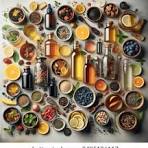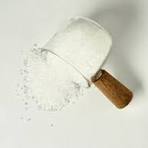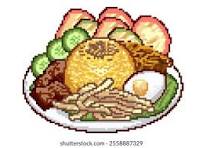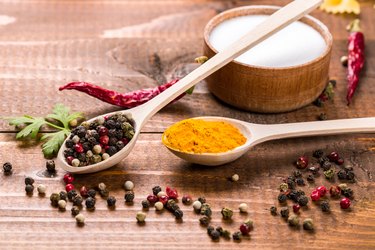
Discover how herbs and spices can transform your meals, making low-sodium diets flavorful and exciting. Learn which seasonings can replace salt, improve heart health, and help break the salt habit.
When it comes to heart health and overall well-being, reducing sodium intake is often a critical step. The average person consumes far more salt than the body needs, which can lead to a range of health issues like high blood pressure, heart disease, and stroke. But for many people, the idea of giving up the comforting taste of salt in their food feels like an impossible task. The good news is that herbs and spices provide a delicious, flavorful alternative to salt that can help transform your low-sodium diet into an exciting culinary experience.
In this article, we will explore the health risks of excessive salt consumption, how to break the salt habit, and the amazing herbs and spices that can enhance the taste of your meals, all while maintaining heart health and reducing sodium intake.
The Hidden Dangers of Excess Salt
Salt, or sodium chloride, is essential for the body in small amounts. It helps regulate fluid balance, nerve function, and muscle contractions. However, too much sodium can have serious consequences. The average American consumes far more than the recommended daily limit, with many processed and packaged foods contributing large amounts of hidden salt.
Excessive sodium intake is linked to numerous health issues, including:
1.High Blood Pressure (Hypertension): High sodium intake is a major contributor to elevated blood pressure. When sodium builds up in the bloodstream, it draws water into the blood vessels, increasing the volume of blood and the pressure on the artery walls.
2.Heart Disease: Persistent high blood pressure can lead to heart disease by putting excessive strain on the heart and blood vessels. Over time, this can damage arteries and increase the risk of heart attacks and strokes.
3.Kidney Disease: Excess salt can harm the kidneys by putting added pressure on them to filter excess sodium. This can eventually lead to kidney damage and disease.
4.Stroke: High blood pressure, a direct result of excessive salt intake, is a leading risk factor for stroke. Strokes occur when blood flow to the brain is restricted, and high blood pressure can increase the likelihood of blockages or ruptures.
5.Osteoporosis: High salt intake can cause calcium loss from bones, which can weaken them over time, leading to conditions like osteoporosis.
Breaking the Salt Habit
If you’re used to adding salt to your food at every meal, or if you rely on heavily salted processed foods, making the transition to a low-sodium lifestyle might feel daunting. The key to breaking the salt habit is not about deprivation—it’s about replacing salt with natural, flavorful alternatives like herbs, spices, and other ingredients that will keep your taste buds happy.
1.Gradual Reduction: Start by slowly cutting back on the amount of salt you use in cooking. This will allow your palate to adjust to the flavor changes without feeling deprived.
2.Focus on Whole Foods: Reduce your reliance on processed and packaged foods, which are often loaded with sodium. Focus instead on fresh vegetables, lean proteins, and whole grains, which naturally have much lower sodium content.
3.Use Salt Sparingly: When cooking, try using small amounts of salt, if necessary. Instead of adding salt at the beginning, taste your dish as you go and add a little at a time. This will help you use less salt overall.
4.Cook at Home: Restaurant meals and fast food tend to be high in sodium. By cooking your meals at home, you have full control over how much salt is used, allowing you to cut back significantly.
5.Experiment with Alternatives: This is where the power of herbs and spices comes in. By experimenting with a variety of herbs and spices, you can create bold, delicious flavors that will make the need for added salt unnecessary.

Herbs and Spices That Replace Salt in Your Diet
If you’re ready to break the salt habit, here are some amazing herbs and spices that can elevate your meals without the need for excess sodium. Each of these herbs and spices adds a unique flavor profile to your food, helping to keep your meals interesting and enjoyable.
1. Garlic
Garlic is a powerful and aromatic herb that’s widely known for its health benefits, including its ability to lower blood pressure and improve cardiovascular health. It has a natural savory flavor that adds depth to soups, sauces, meats, and vegetables. Fresh garlic, garlic powder, or garlic granules can all be used as a great alternative to salt.
2. Basil
Basil has a sweet, slightly peppery taste, making it a versatile herb for everything from Italian pasta dishes to Thai-inspired recipes. It pairs well with tomatoes, vegetables, and meats, and can be used fresh or dried.
3. Rosemary
Rosemary has a woody, fragrant flavor that pairs wonderfully with roasted vegetables, potatoes, meats, and even some breads. Its distinctive taste can help replace salt in savory dishes, adding complexity and aroma.
4. Thyme
Thyme is another herb with a robust flavor that complements a wide variety of dishes, from soups and stews to meats and roasted vegetables. It has a subtle earthy flavor, which enhances the natural taste of ingredients without overpowering them.
5. Cilantro
Cilantro, also known as coriander, is a herb commonly used in Mexican, Indian, and Mediterranean cuisines. It has a fresh, citrusy flavor that brightens up dishes like salsas, curries, and salads. It can also be used in marinades and dressings.
6. Parsley
Parsley is a mild, refreshing herb that adds brightness to dishes without overwhelming the palate. It’s perfect for garnishing soups, salads, or fish, and can be mixed into sauces or dips.
7. Cumin
Cumin has a warm, earthy flavor that adds depth to a variety of cuisines, including Indian, Middle Eastern, and Mexican. It pairs well with chili, curries, roasted meats, and even vegetable dishes. Cumin can add a savory, comforting note without relying on salt.

8. Paprika
Paprika adds a mild to medium spiciness and a subtle sweetness to food. It is commonly used in Hungarian and Spanish dishes, and can also be sprinkled on roasted vegetables, grilled meats, and soups for added flavor.
9. Oregano
Oregano has a pungent, slightly bitter flavor that is a cornerstone of Mediterranean and Italian cuisine. It pairs well with tomato-based dishes, grilled meats, and pasta, making it a wonderful salt substitute in many recipes.
10. Lemon Zest
Lemon zest is a natural way to add brightness and acidity to dishes. Its sharp, citrusy flavor makes it an excellent replacement for salt in salad dressings, marinades, and seafood dishes. A little goes a long way in enhancing flavors.
11. Chili Powder and Cayenne Pepper
If you’re looking for a little heat in your meal, chili powder and cayenne pepper are great ways to bring spice and flavor without adding sodium. These spices work well in Mexican, Indian, and Asian-inspired dishes.
12. Ginger
Ginger offers a spicy and slightly sweet flavor that can be used in both sweet and savory dishes. It is often used in Asian and Indian cooking, where it pairs beautifully with vegetables, meats, and rice dishes.
Additional Tips for Low-Sodium Cooking
1.Use vinegar: Adding a splash of vinegar (apple cider vinegar or balsamic vinegar) can brighten up dishes and replace the tangy flavor that salt often provides.
2.Add umami-rich ingredients: Ingredients like mushrooms, tomato paste, and seaweed contain natural compounds that provide an umami taste, which can mimic the savory flavor that salt adds to food.
3.Try salt-free seasoning blends: There are many pre-made salt-free seasoning blends available in grocery stores that are designed to add flavor without sodium. Look for ones that include herbs like oregano, thyme, basil, garlic, and pepper.
Conclusion: Rediscovering Flavor Without Salt
Breaking the salt habit doesn’t have to be a daunting task. By embracing the wide variety of herbs, spices, and flavor-packed ingredients available, you can enjoy meals that are rich in taste without the need for excessive sodium. Not only will this help you maintain a healthy heart and body, but it will also open up a whole new world of culinary possibilities.
Experiment with different herbs and spices, mix them in your favorite dishes, and find new ways to keep your meals exciting and satisfying while protecting your cardiovascular health.
Q&A Section
Q1: How can I make a transition to a low-sodium diet without feeling like my food lacks flavor?
A1: Start by gradually reducing the amount of salt you use and replacing it with flavorful herbs and spices. Experiment with fresh ingredients like garlic, basil, and lemon zest to bring out natural flavors.
Q2: Are there any specific herbs or spices that are especially beneficial for heart health?
A2: Herbs like garlic, oregano, basil, and thyme have properties that support heart health. Garlic, in particular, has been shown to help lower blood pressure and reduce cholesterol levels.
Q3: Can I find pre-made salt-free seasoning blends in stores?
A3: Yes! Many grocery stores carry salt-free seasoning blends that combine various herbs and spices. Look for blends that include garlic, onion powder, and herbs like oregano, basil, and thyme.
Q4: How much sodium should I aim for in my daily diet?
A4: The American Heart Association recommends no more than 2,300 mg of sodium per day, with an ideal limit of 1,500 mg per day, particularly for those with high blood pressure.
Q5: Can I still eat out on a low-sodium diet?
A5: Yes, but it’s important to be mindful of your choices. Many restaurants offer low-sodium options or are willing to prepare dishes without added salt. Don’t hesitate to ask for your meal to be made with minimal salt.
